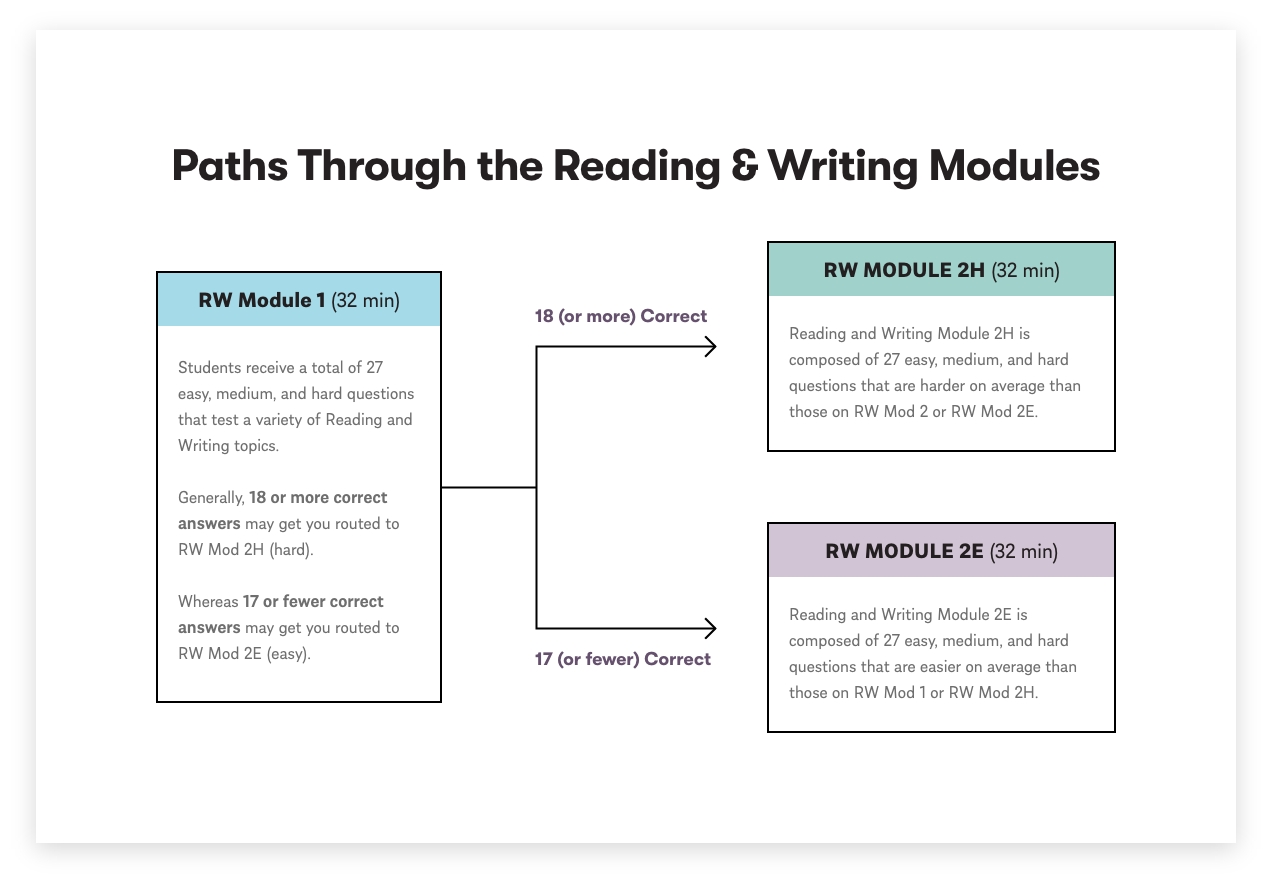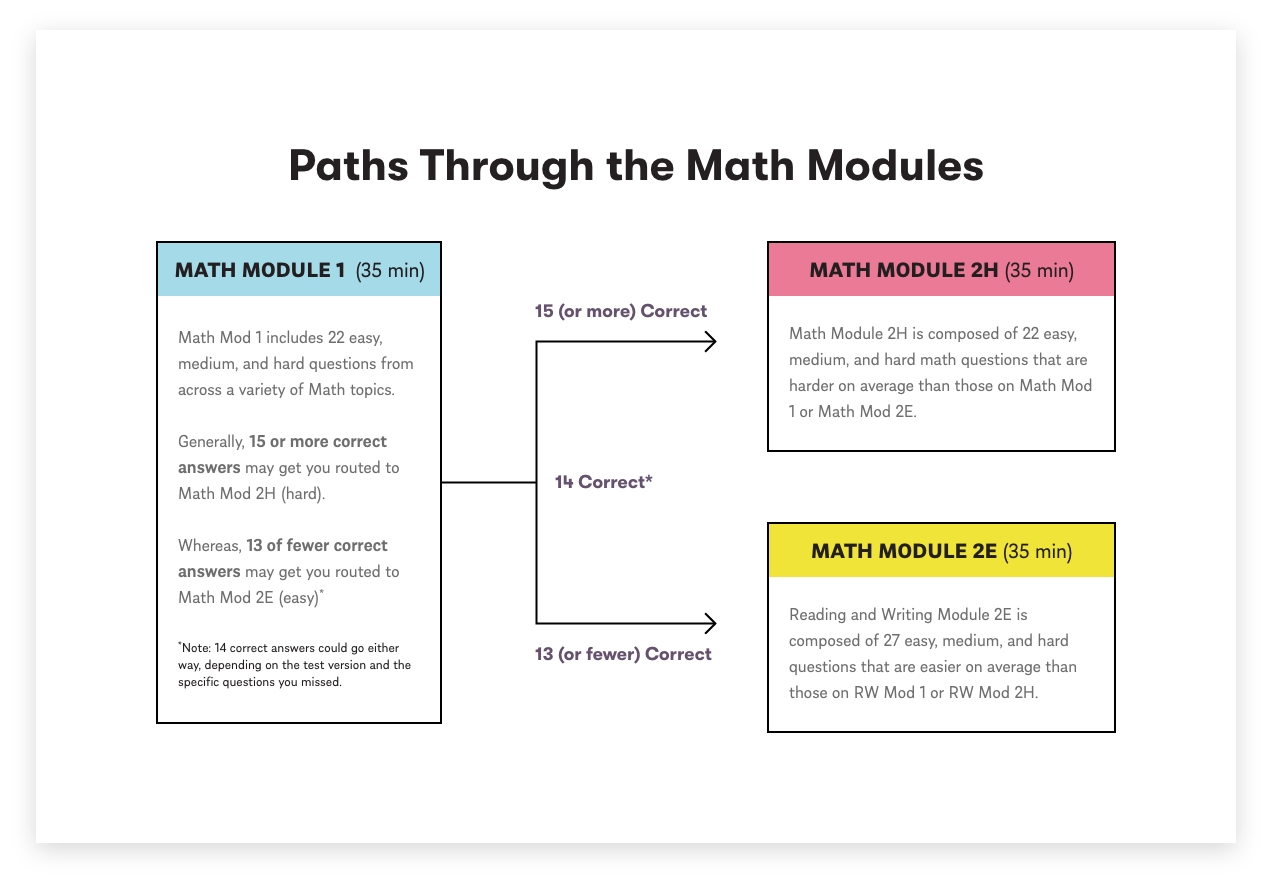SAT® Prep
Proven Tutoring Methods for SAT® Preparation
We start SAT tutoring with the goal of minimizing anxiety and keeping entrance exams in perspective. With our proven method, we’ve helped tens of thousands of students improve their scores and apply to schools with confidence. Our test prep tutors are more than experts. They are seasoned SAT coaches who help students with pacing, goalsetting, and managing test anxiety. We offer private SAT tutoring and in person depending on your student’s preference.
Receive Our Latest College Admissions Guide
-
Official Diagnostic Exams
Students enjoy results when we start with data. First step: determine which test is better for your student! Students take practice SAT® exams. Our detailed report helps pinpoint strengths and opportunities for improvement. As prep continues, students take periodic exams to further refine skills and gain experience.
-
Complimentary Test Prep Consultation
The tests may be standardized, but your testing plan is not. Our education consultant will meet with you in your home to review diagnostic exam results and assess transcripts and goals. This way we can make a targeted plan for your family! You’ll leave the session feeling confident about
which tests to take, when to begin preparing, and when to sit for your first official exam. -
One-to-One Private Coaching
Our tutors are equipped with information about your student and an understanding of your family’s budget, goals, and time constraints. We will recommend a level-headed plan that aligns with your needs. Whether that includes 1:1 in-home and online tutoring, small group instruction, or online tutoring.
-
Proven Curriculum
We’ve refined our approach to test preparation over 15 years. Our workbook-based or online curricula provide an approachable guide for students. They also provide practice on real, full-length practice tests at-a-glance analytics and keep a finger on the pulse of progress.
-
Expert SAT® Coaches
Our test prep coaches are all exceptional and bring their own particular expertise and personality to the job. We take great care to match students with the “right fit” tutor based on learning style, personality, and academic need!
The SAT has been one of the pillars of college entrance exams for nearly a century. While the test has undergone multiple changes over that span, its current iteration is comprised of a combination of reading and writing, and math sections.
Starting in March 2024, the SAT will be an entirely new exam compared with its prior versions. The score range of 200-800 points for each of the Reading and Writing section and Math section will remain the same for a total possible composite score of 1600 points. Multiple-choice answers will continue, but many other aspects of the exam will be changed.
Format
Reading & Writing: 54 questions, 64 minutes
Math: 44 questions, 70 minutes
TOTAL: 98 questions, 134 minutes of testing
Content
Reading and Writing Section
Craft and Structure (28%)
Assesses the ability to grasp and utilize important words and phrases in context, analyze texts rhetorically, and connect related topics
Information and Ideas (26%)
Evaluates skills in understanding, analyzing, and reasoning, plus the ability to find, interpret, assess, and combine information from texts and visual aids like tables and graphs
Standard English Conventions (26%)
Assesses text editing skills for adherence to Standard English grammar, usage, and punctuation rules
Expression of Ideas (20%)
Evaluates the capacity to enhance written expression and achieve specific rhetorical objectives through text revision
Math Section
Algebra (35%)
Assesses proficiency in linear equations, inequalities, and systems of equations, and the ability to use multiple solution methods
Advanced Math (35%)
Assesses proficiency with the skills foundational to higher-level math.
Concepts include absolute value, quadratic, exponential, polynomial, rational, and radical expressions.
Problem-Solving and Data Analysis (10%)
Assesses quantitative reasoning skills. Concepts include ratios, rates, proportional relationships, and data sets with one or two variables
Geometry and Trigonometry (10%)
Concepts include angles, triangles, circles, area, volume, and trigonometry
Scoring
Possible scores on the SAT range from 400-1600. Points are awarded for correct responses, and there are no point deductions for incorrect answers or unanswered questions. This means that if you’re stumped on a particular question, you should always take your best guess. Don’t leave any questions blank!
The mean SAT scores (prior paper exam) for the class of 2023 were:
SAT Section and the Mean Score
- Evidence-Based Reading & Writing: 520
- Math: 510
- TOTAL: 1030
To put that into context or to assess your own performance, consider these score ranges:
- Outstanding: 1500+
- Excellent: 1400 – 1500
- Very Good: 1300 – 1390
- Good: 1200 – 1290
- Average: 1100 – 1190
The Digital SAT (dSAT)
The Digital SAT or “dSAT” will be administered in digital format on computers furnished by the test taker or by a test site. College Board which developed & administers the SAT exam, states its primary objectives for the dSAT are “The digital SAT Suite will be easier to take, easier to give, more secure, and more relevant.” Also, the dSAT is “designed and developed such that each student is administered a highly comparable but unique version of the test”, with a goal to eliminate cheating or score manipulation.
Significant changes and new features of the dSAT are listed below:
- Shorter duration (2 hours 14 minutes vs. 2 hours 55 minutes), more time per question
- Digitally administered via Bluebook app (free download from College Board)
- Section timing countdown clock is displayed on-screen (can also be hidden)
- Question navigation button to quickly select any question in the module
- Each section module will contain 2 experimental non-scored questions
- Answer choices deemed incorrect can have a line drawn through them for elimination ease
- “Mark for Review” button highlights questions to be reviewed prior to module completion
- QAS service will cease with the advent of the dSAT
- Reading and Writing Section: 2 modules, 27 questions each, 32 minutes per module
- Content Domains: Craft and Structure (28%), Information and Ideas (26%), Standard English Conventions (26%), Expression of Ideas (20%)
- Shorter reading passages (approximately 100 words each), fewer questions per passage
- Math Section: 2 modules, 22 questions each, 35 minutes per module
- Content Domains: Algebra (35%), Advanced Math (35%), Problem Solving and Data Analysis (15%), Geometry and Trigonometry (15%)
- DESMOS graphing calculator may be used for the entire math section
- Increased emphasis on Geometry, Trigonometry, advanced functions
- Negative answers now allowed for student produced (grid-in) questions
Analysis of the dSAT
The dSAT has been designed as a multistage adaptive test (MST) consisting of four modules of questions, two modules for the Reading and Writing section, and two modules for the Math section. Total testing time is 2 hours 14 minutes, and a 10-minute break will occur at the midpoint. This is a reduction from the 2 hours 55 minutes duration of the prior paper-based SAT.
The term adaptive means the question order will vary for each test taker’s exam and part of the variation will be based on the performance of the individual test-taker. The dSAT is module adaptive rather than question adaptive. The difficulty of questions in the first module of a section is the same for all test takers. All students will receive the same blend of easy, medium, and hard questions in module one of each section. Also, each question will have a different weighting, which results in different points being earned for different questions.
A test taker’s second module is assigned based on their performance on the first module. Both the number of correctly answered questions and the types of those questions will determine whether the harder or easier version of module 2 will be assigned, which ultimately will determine the maximum possible SAT score range. The difficulty of the second module of a section will vary and will be determined by the student’s performance in module one. Section scores in the high 600s to 800 points will be possible only if the test taker is assigned the harder second module.
How to Increase dSAT Score Potential
The way to achieve a high score is to perform well enough on the first module of each section, to be assigned the harder second module for each section. Students who do well enough on the first module of both sections to be assigned the more difficult second modules will achieve higher composite scores than students who are not assigned the harder second modules for both sections.
See below for the dSAT modules testing process:
Paths Through the Reading & Writing Modules
RW MODULE 1 (32 min): Students receive a total of 27 easy, medium, and hard questions that test a variety of Reading and Writing topics. Generally, 18 or more correct answers may get you routed to RW Mod 2H (hard). Whereas 17 or fewer correct answers may get you routed to RW Mod 2E (easy).
- 18 (or more correct) >
RW MODULE 2H (32 min)Reading and Writing Module 2H is composed of 27 easy, medium, and hard questions that are harder on average than those on RW Mod 2 or RW Mod 2E.
- 17 or fewer correct >
RW MODULE 2E (32 min)Reading and Writing Module 2E is composed of 27 easy, medium, and hard questions that are easier on average than those on RW Mod 1 or RW Mod 2H.
Paths Through the Math Modules
MATH MODULE 1 (35min): Math Mod 1 includes 22 easy, medium, and hard questions from across a variety of Math topics. Generally, 15 or more correct answers may get you routed to Math Mod 2H (hard). Whereas, 13 of fewer correct answers may get you routed to Math Mod 2E (easy)*
- 15 (or more) correct >
MATH MODULE 2H (35 min)Math Module 2H is composed of 22 easy, medium, and hard math questions that are harder on average than those on Math Mod 1 or Math Mod 2E.
- 13 (or fewer) are correct >
MATH MODULE 2E (35 min)Math Module 2E is composed of 22 easy, medium, and hard math questions that are easier on average than those on Math Mod 1 or Math Mod 2H.
*Note: 14 correct answers could go either way, depending on the test version and the specific questions you missed.
Testing For Students With Accommodations
College Board’s goal is for students to take the dSAT rather than a paper analog of it. Some students with test-taking accommodations approved by College Board might be given a paper-based, non-adaptive exam, especially when Braille is required. Students who have been granted accommodations should first confirm with College Board what type of exam they will be given, and they should ensure to be registered with a test site which can support the accommodations on the targeted test date. It is also recommended for students to keep informed of College Board’s dSAT administration policies and procedures stated on their website, since they may change over time.
Registration and Test Dates
The easiest way to sign up to take the SAT is to register online. Registration is also available by mail.
Be sure to stay up-to-date with the latest test dates and registration deadlines to ensure you will be able to take the test and receive your scores in time to complete your college applications.


